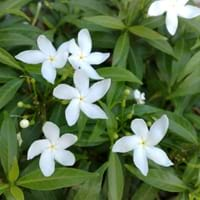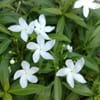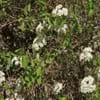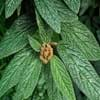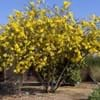Life Span
Annual and Perennial
Perennial
Type
Broadleaf Evergreen
Broadleaf Evergreen
Origin
India, Southeast Asia
Australia
Types
Not Available
Bigleaf hydrangea, Hortensia, Smooth hydrangea, Oakleaf hydrangea, Annabelle
Number of Varieties
Not Available
Habitat
gardens, Homesteads
Forest edges, Hillside, Woods
USDA Hardiness Zone
10-15
9-15
AHS Heat Zone
Not Available
Not Available
Flower Color Modifier
Bicolor
Bicolor
Leaf Color in Spring
Dark Green
Light Green, Bronze
Leaf Color in Summer
Dark Green
Light Green
Leaf Color in Fall
Dark Green
Light Green
Leaf Color in Winter
Dark Green
Light Green
Plant Season
Spring, Summer, Fall, Winter
Spring, Summer, Fall, Winter
Sunlight
Full Sun, Partial Sun
Full Sun
Growth Rate
Medium
Medium
Type of Soil
Loam, Sand
Loam, Sand
The pH of Soil
Acidic, Neutral
Acidic, Neutral
Soil Drainage
Not Available
Well drained
Bloom Time
Indeterminate
Late Spring, Early Summer, Summer, Indeterminate
Tolerances
Not Available
Pollution, Drought
Where to Plant?
Ground, Pot
Container, Ground
How to Plant?
Seedlings, Stem Cutting
Seedlings, Stem Planting
Plant Maintenance
Medium
Medium
Watering Requirements
Keep the ground moist but not water-logged, Requires watering in the growing season, Use Mulches to help prevent water loss during hot and windy weather, Water more in summer
Not Available
In Summer
Lots of watering
Drought Tolerant
In Spring
Moderate
Moderate
In Winter
Average Water
Average Water
Soil pH
Acidic, Neutral
Acidic, Neutral
Soil Type
Loam, Sand
Loam, Sand
Soil Drainage Capacity
Not Available
Well drained
Sun Exposure
Full Sun, Partial Sun
Full Sun
Pruning
Cut or pinch the stems, Do not prune during shooting season, Prune if you want to improve plant shape, Prune to control growth, Prune when plant is dormant, Remove deadheads, Shape and thin as needed
Remove damaged leaves, Remove dead branches, Remove dead leaves
Fertilizers
All-Purpose Liquid Fertilizer
All-Purpose Liquid Fertilizer
Pests and Diseases
Nematodes, Scale, Spider mites
Red blotch
Plant Tolerance
Not Found
Pollution, Drought
Flower Petal Number
Single
Single
Foliage Texture
Medium
Fine
Foliage Sheen
Glossy
Matte
Attracts
Bees, Butterflies, Insects
Bees, Flies
Allergy
Skin irritation
Chest tightness, Diarrhea, Dizziness, Nausea, Vomiting
Aesthetic Uses
Beautification, Ground Cover, Showy Purposes, Used for decorating walls, fences, gates, hedges, etc.
Not Available
Beauty Benefits
Not Available
Not Available
Edible Uses
No
Not Available
Environmental Uses
Air purification
Air purification
Medicinal Uses
Antipyretic, Astringent, Cough, Kidney problems, Kidney Stones, Scabies, Ulcers
Fever, Kidney problems, Urinary tract problems
Part of Plant Used
Flowers, Leaves, Root
Flowers, Root
Other Uses
Showy Purposes
Not Available
Used As Indoor Plant
No
Not Available
Used As Outdoor Plant
Yes
Yes
Garden Design
Container, Feature Plant, Hedges, Mixed Border, Tropical
Container, Feature Plant, Foundation, Hedges, Mixed Border, Screening, Wind Break
Botanical Name
Tabernaemontana Divaricata
CALLISTEMON viminalis
Common Name
Crepe Jasmine
Weeping Bottlebrush
In Hindi
Tabernaemontana
Hydrangea
In German
Tabernaemontana
Hortensie
In French
Tabernaemontana
Hortensia
In Spanish
Tabernaemontana
Hortensia
In Greek
Tabernaemontana
υδραγεία
In Portuguese
Tabernaemontana
Hortênsia
In Polish
Tabernaemontana
Hortensja
In Latin
Tabernaemontana
Hibiscus
Phylum
Magnoliophyta
Not Available
Class
Magnoliopsida
Not Available
Order
Gentianales
Not Available
Family
Apocynaceae
Myrtaceae
Genus
Tabernaemontana
Not Available
Clade
Angiosperms, Asterids, Eudicots
Not Available
Tribe
Not Available
Not Available
Subfamily
Rauvolfioideae
Not Available
Number of Species
Not Available
Difference Between Crape Jasmine and Weeping Bottlebrush
If you are confused whether Crape Jasmine or Weeping Bottlebrush are same, here are some features about those plants to help you choose better. Many people think that these two plants have the same characteristics, but one can see Crape Jasmine and Weeping Bottlebrush Information and learn more about it. Fertilizers required for proper growth of Crape Jasmine are All-Purpose Liquid Fertilizer, whereas for Weeping Bottlebrush fertilizers required are All-Purpose Liquid Fertilizer. Hence, one should know the basic difference between Crape Jasmine and Weeping Bottlebrush if you are planning to have them in your garden to enhance its beauty.
<
Flowering PlantsImportance of Crape Jasmine and Weeping Bottlebrush
Want to have the most appropriate plant for your garden? You might want to know the importance of Crape Jasmine and Weeping Bottlebrush. Basically, these two plants vary in many aspects. Compare Crape Jasmine and Weeping Bottlebrush as they differ in many characteristics such as their life, care, benefits, facts, etc. Every gardener must at least have the slightest clue about the plants he wants to plant in his garden. Compare their benefits, which differ in many ways like facts and uses. The medicinal use of Crape Jasmine is Antipyretic, Astringent, Cough, Kidney problems, Kidney Stones, Scabies and Ulcers whereas of Weeping Bottlebrush is Fever, Kidney problems and Urinary tract problems. Crape Jasmine has beauty benefits as follows: Not Available while Weeping Bottlebrush has beauty benefits as follows: Not Available.
Compare Facts of Crape Jasmine vs Weeping Bottlebrush
How to choose the best garden plant for your garden depending upon its facts? Here garden plant comparison will help you to solve this query. Compare the facts of Crape Jasmine vs Weeping Bottlebrush and know which one to choose. As garden plants have benefits and other uses, allergy is also a major drawback of plants for some people. Allergic reactions of Crape Jasmine are Skin irritation whereas of Weeping Bottlebrush have Chest tightness, Diarrhea, Dizziness, Nausea and Vomiting respectively. Having a fruit bearing plant in your garden can be a plus point of your garden. Crape Jasmine has no showy fruits and Weeping Bottlebrush has no showy fruits. Also Crape Jasmine is not flowering and Weeping Bottlebrush is not flowering . You can compare Crape Jasmine and Weeping Bottlebrush facts and facts of other plants too.
